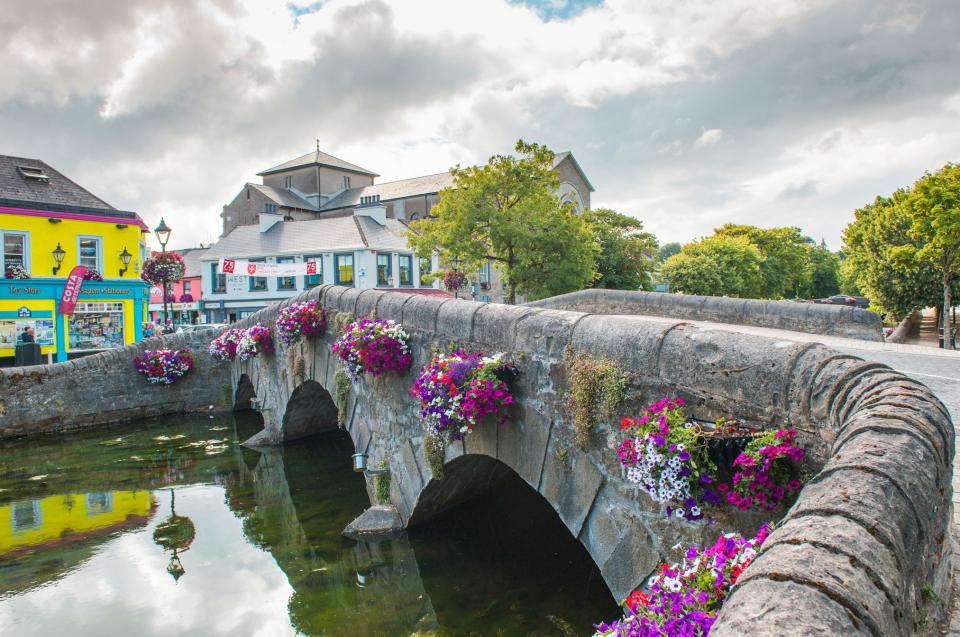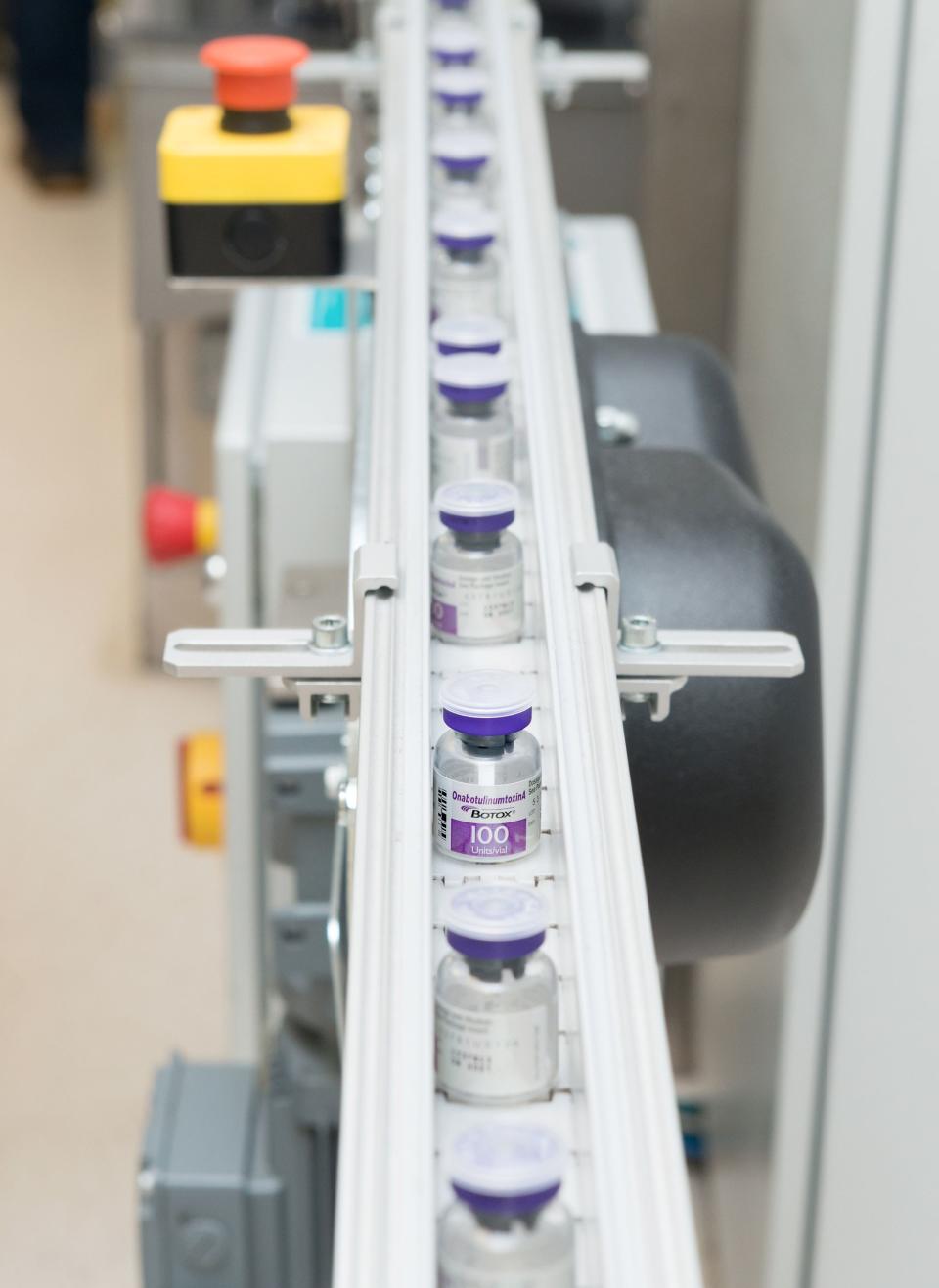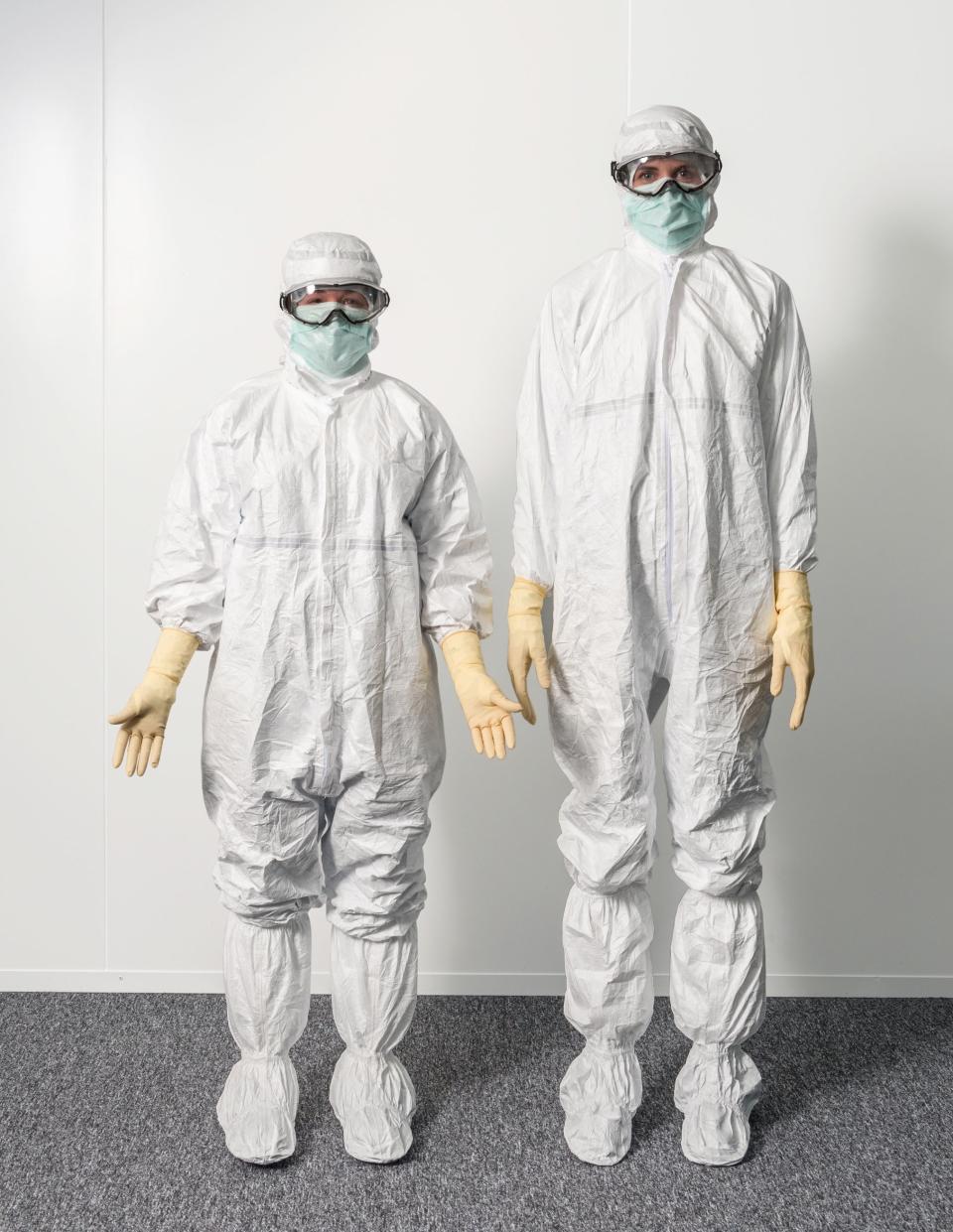An Inside Look at the Legendary Botox Factory in Westport, Ireland
I will bet you a lot of dollars that you can’t guess where Botox comes from. A crystal-encrusted vat wreathed in liquid nitrogen and buried underneath the Hollywood Hills? Nice try! But no. A concrete bunker in the Arizona desert encircled by barbed wire and tumbleweed? I see where you’re going, but not even close. I have been to the place that produces the entire planet’s supply of the wrinkle-smoothing, brow-raising drug, and here is how I got there: by flying into Dublin (the one in Ireland) and driving 156 miles, clear across the country, to a village nestled in a craggy, wind-lashed coastline.
Westport, Ireland (or Cathair na Mart for our Irish-speaking readers, both of you), has a population of about 5,000. It sits in the shadow of an ancient mountain, the end point of an annual pilgrimage, where Saint Patrick is said to have fasted for 40 days and 40 nights. It’s a town of brightly colored storefronts, tweed flat caps, and wide smiles. During my 60 hours here, at least half a dozen residents make sure I know that they have won Ireland’s TidyTowns competition not once, not twice, but three times.
More than 1,200 people work at a plant on the edge of town. It’s owned by the drug company Allergan, and since 1994 it has produced all the Botox. “Whether you’re in Hollywood or acting in London’s West End, your Botox is 100 percent guaranteed Irish,” boasts longtime Westporter Simon Wall, the town architect, over a lunch of wild Irish salmon and multiple varieties of potato. Kind of like an Aran sweater. If an Aran sweater could make you look like your birthday only comes every five years or so.

My first hours in Westport are exactly what you would expect of your first hours in a small Irish town that looks like a postcard and smells like fresh dew and rainbows. There’s strolling along drizzle-slicked cobblestones; browsing the full spectrum of wool accessories; Guinness drinking in dark pubs, the walls echoing with fiddles and banjos.
The next morning, I arrive at Allergan. At the end of a long lane just off the main road out of town, I check in at a small security outpost before being driven to a steel-and-glass building, one of four on the 61-acre campus. Amelia Browne-Kilbane greets me in the lobby. She’s been working here for 25 years. Her mom worked at the plant, too, and her uncle was part of the construction team that built it. Her father was born in a house across the road. I want to tell you that she said “top o’ the mornin’ ” before leading me to a conference room down the hall, but real Irish people do not say “top o’ the mornin’,” ever, and they’re very confused about why we think they do. (I tell them that I think it might have something to do with an old Lucky Charms commercial, but I’m really not sure.)
My first meeting, before my full tour, is with Paul Coffey, vice president and plant general manager of Allergan Westport. He does not want my phone to join us — and under no circumstances can I take pictures of anything. “No problem, I’ll just be using my voice-recorder app,” I say. Yeah, that’s not allowed either.
“Botox is not a chemical; it’s a biological product. That means that it’s very sensitive to minor changes in manufacturing,” says Coffey. “The product is the process [by which it’s produced].” So that process is passionately guarded. Here’s what I am allowed to tell you: It starts with what Coffey calls the “source drug”: botulinum neurotoxin type A. (Less than one gram of the purified toxin is enough to make the world’s supply of Botox for an entire year.) It then travels to Ireland from an undisclosed location in the U.S., on a private plane, with a security detail. (Overkill? According to an article published in the Journal of the American Medical Association, a single gram of botulinum toxin in crystalline form, “evenly dispersed and inhaled, would kill more than 1 million people.” OK, so definitely not overkill.)

Once this murderous material arrives with its entourage in Westport, an unfathomably tiny amount of it is combined with saline solution. Now a liquid, it’s transferred to a “filling room,” where the product is sterilized and dispersed into glass vials. Those vials then go to a drying chamber, where the solution is reduced to a minuscule amount of dried product at the base of the glass. (Eventually, a doctor will put saline back in that bottle to create an injectable liquid.) There’s a visual inspection of every vial before the vials are labeled, packed in boxes, and sent to cold (5 to 23 degrees Fahrenheit cold) storage rooms, where they wait to be shipped to their final destination. (No more armed guards; at this point, FedEx is fine.) In the two minutes before I beg to leave one of these painfully frigid rooms, I see two full pallets marked for Brazil, one for Argentina, about four boxes for Qatar, and two that are Malta-bound. The Botox from Westport travels to 96 countries around the world.
But not much of it stays local. The foreheads I encounter here — of Eileen and Fiona, Siobhan and Aidan — are highly mobile. No one can point me to a dermatologist administering Botox in Westport. Perhaps the locals think like Wall does: Cosmetic Botox is for actors. Celebrities. Not regular people from a tidy town in County Mayo.
Regular people like lab worker Annette Enright, a PhD in regenerative medicine who assesses Botox for potency. (Allergan figured out how to do this with a test that uses cell cultures, instead of mice, and has been using this method in-house since 2011.) She is also a competitive deep-sea fisherwoman and a champion in the Allergan Sea Angling Society.
Or Nóirín Moran, a supervisor in the analytical and technical lab that tests Botox for sterility and moisture. She is also a star of County Mayo’s women’s Gaelic football team. (Gaelic football is a cross between soccer and rugby and often involves a lot of mud and shoving, but no pads.)
Or Aidan O’Shea, who works in supply chain. He, too, is a Gaelic football celebrity; as far as I can tell, he is to Westport what Tom Brady is to Boston (although, for the record, he makes Tom look a little homely).
Or Liam Friel, a 38-year veteran and senior manager of the factory and a third-generation poet.
Many people who work at the Botox plant, like Browne-Kilbane, are also second- or third-generation employees. And Friel, who first saw his wife in these halls, estimates that there are about 200 couples who met on this campus. I ask Jackie Gray, who works in supply chain, if she has family employed here: “My sister. My sister’s husband. And some cousins.”
Botox is a booming business. It’s been 30 years since it was FDA approved (for treating eye spasms and crossed eyes); to date, more than 80 million vials of Botox (for both therapeutic and cosmetic use) have come out of Westport. There are now two other botulinum toxins for aesthetic use (Dysport and Xeomin), but some report that Botox still has nearly 70 percent of the market share. This success has kept Westport vibrant when many other similar towns aren’t making it. “The bottom is falling out of rural Irish towns,” says Wall. “People are leaving to go to the big cities, and these towns are running to stand still, as Bono would say. Some are pretty much shutting down.” Yet Westport stays buoyant, undimmed.
Climb Croagh Patrick, the pilgrimage site, and you’ll be overlooking Clew Bay, dotted by 365 islands, one for every day of the year, the locals tell me. Beyond that is the Atlantic. If you subscribe to Celtic mythology, somewhere out in these western Irish seas is Tír na nÓg, “the land of youth.” In this otherworld, no one ever grows old, and nothing fades. It’s like the people there know of an elixir that can defy time. Imagine that.

Clean Freaks
Westport may be one of the tidiest towns in Ireland, but the filling rooms in the Botox factory are some of the most pristine spaces in the whole of the Milky Way galaxy. You know how sterile a hospital’s operating room is? It’s a festering cesspool compared to what is referred to as a “clean room” at Botox HQ. To ensure its purity, the air is filtered 200 times per hour (the air in your office probably circulates about twice in the same amount of time), and it’s constantly monitored for temperature, humidity, and particulate matter. Everyone working in these rooms must move as little and as slowly as possible to avoid any potential for contamination. If you sneeze, you have to leave the room immediately and mark down the date and time of the sneeze. And before anyone enters the room, they must “gown.”
“Gown” is a verb here. As in, “Employees undergo rigorous training to learn how to gown.” The process has over 40 steps and begins with trading your street clothes for scrubs. Then you enter an antechamber where you put on the gown (a jumpsuit, actually), hood, goggles, knee-high paper boots, and two pairs of rubber gloves. You have to remove each of these items from sealed plastic bags and put them on without touching the outside of the item. If you do? Take everything off and start over. It takes me more than 30 minutes to gown. During the process I screw up — i.e., back to step one — six times. If this were the real deal, when I was done, multiple samples would be taken of my gauzy getup; if more than two bacteria were found (so a few thousand less than normal), I would’ve failed the test. And you thought your boss was relentless.
A version of this article originally appeared in the December 2018/January 2019 issue of Allure. To get your copy, head to newsstands or subscribe now.
For more on botox:

